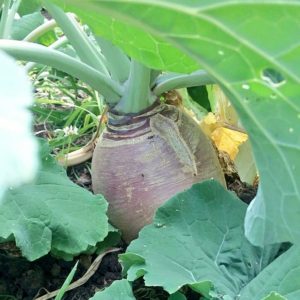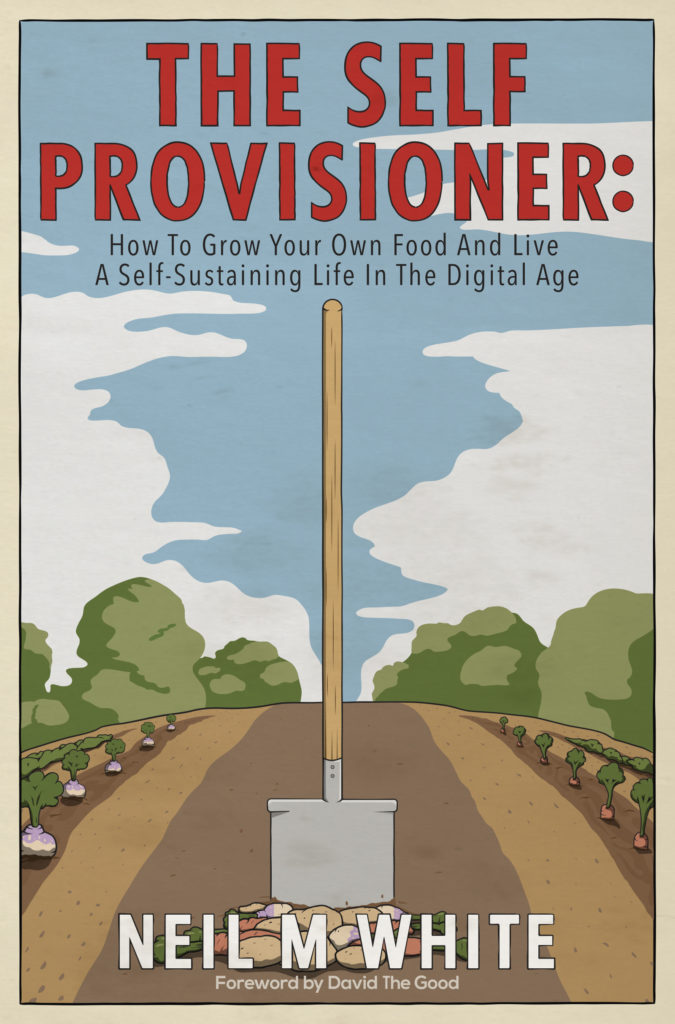What is Self Provision Gardening?
In my previous post I introduced you to the idea of Self Provision Gardening. In this next instalment I want to explain to you some of the concepts behind this gardening philosophy.
I’ve been actively growing a self provision garden for nearly two years and have had some great success as well as providing interest for me and my family. Oh and we grew some delicious, freshalicious fruit and veg.
The thing was, I didn’t know I was a self provision gardener until I read ‘Down to Earth’ by Monty Don. This got me thinking about what I want or need to get out of my garden. And what guides the way I approach it.
So, without much ado, I’m going to plunge straight into the concepts of Self Provision Gardening (if you want to know how I got here, read my earlier post).

A Self Provision Gardener Grows Useful Crops
Imagine you wanted to grow enough food to survive completely self-sufficiently. What would that look like? First up you’d need a lot of land, labour and time. Permaculture proponents who believe you can survive on all the vegetables grown in a bathtub sized plot are kidding themselves and you (also that’s a quick way to wear out your soil).
You’d need to keep animals for protein and manure to keep everything fertilised and have crops growing through the year.
You’d also have to rely on a few high energy crops (subsistence farmers in developing countries do this) instead of enjoying a varied and healthy diet.
So we’re kicking all that idealistic hippy nonsense to the kerb and instead thinking about what fruit and vegetables you like to eat. That’s what I mean by ‘useful’ – food that you like to eat and cook with. No tapioca or white maize here (unless you love that stuff).
Here’s a short list of what I like to eat (and therefore grow):
- Cucumbers
- Apples
- Grapes
- Potatoes
- Carrots
- Figs
- Turnip/Swede
- Beans
- Peas
- Asparagus
So if those are the foods you like to eat, and you want to provide for yourself (self provision – geddit?) then you’ll want to grow crops you are going to eat, enjoy and build meals around.
Novelty and ‘show’ crops are out and dependable varieties of heavy cropping, disease resistant veggies are in. If you like to munch them, then they’re a keeper. The easier to grow and more suited to your climate the better.
Disease resistance and good breeding is especially important if you’re following the ‘low input’ concept (read on for more on this). The last thing you want to be doing is buying expensive pesticide chemicals or losing large parts of your harvest to the medium-large hairy Oobit moth (I made this insect up up).
A Self Provision Gardener Grows Crops that Store
Knowing what crops store well (and how to store them) is a key part of Self Provision Gardening. Yes we all like to eat salads fresh from the garden, but what do you eat out of season?
Imagine if you could make the produce from your garden last most, if not all of the year?
Storing doesn’t need to mean freezing or drying either. It might mean root cellaring, canning, pickling or making jams and chutneys. If it makes your abundant harvest last longer so that you are provided for through the autumn, winter and early spring then you are practising self provision.
Crops that are known for storing well are:
- Apples
- Potatoes
- Alliums (onions, garlic)
- Root vegetables e.g. carrots
In times gone by, it would have been difficult to learn about preserving food but now with the internet, you can find any number of YouTube tutorials and blogs on the subject.
Growing crops that store well is a key part of self provision gardening and is what separates us from the casual vegetable grower.

A Self Provision Gardener Uses Minimal Inputs
Sometimes I go to my local garden centre just to be baffled at the range of products, additives and treatments available (orchid compost anyone?)
Us Self Provision Gardeners kick all that to the kerb. We’re all about using what we’ve got, minimal inputs including our time and labour. This is about efficiency as well as the satisfaction of growing your own food.
Here are a few ways you can reduce your inputs:
- Make your own compost instead of buying it in or using ‘muni-post’ – the low grade recycled stuff which is nutrient destitute.
- Find a source of fresh horse or farmyard manure – even when I lived in the city, the police stables were a 10 minute drive across town.
- Grow plants from seed, not ready grown plugs bought from the nursery
- Recycle waste such as wood ash and your own urine for added nutrients.
Another good rule of thumb is making sure that whatever you take off the land in terms of nutrients and carbon is replaced in some way. If you compost all your crop residues, this minimises what is lost from your garden and helps feed the soil for the future.
Inputs can also take the form of expensive tools, compost bins and raised beds. Instead of shelling out big amounts of cash for these things, make do with what you have (most of my tools I’ve bought cheap, ‘borrowed’ or acquired when I moved house and found old, abandoned hoes gathering dust in a shed).
Self Provision is a Way of Living a Better, More Connected Life
In my first book, A Father’s Mission, I wrote about how we are losing the connection with the land. It’s a connection which has lasted millenia but as our farming becomes more and more mechanised and less like actually growing stuff that link is breaking.
Self Provision is a realistic way of rediscovering that link. You’re not going down the loony road of self-sufficiency which isn’t for normies like you and me. But you are going to reach that deep connection with the land and maybe even share that with your children.
Self Provision gardening gives you the joy of growing a meaningful quantity of useful food without the grinding slog of trying to be self sufficient. It is the joy of those sweet new potatoes or crunchy sweet garden peas without the bad back, sun burn or shifty eyes from the neighbours.
I would encourage you to consider Self Provision Gardening as an alternative to attempting self-sufficiency. Or if you want to take casual vegetable growing up a notch. Come back here and tell me how you are getting on.
Neil
P.S. My new book ‘The Self Provisioner’ is out now. Buy it here.

